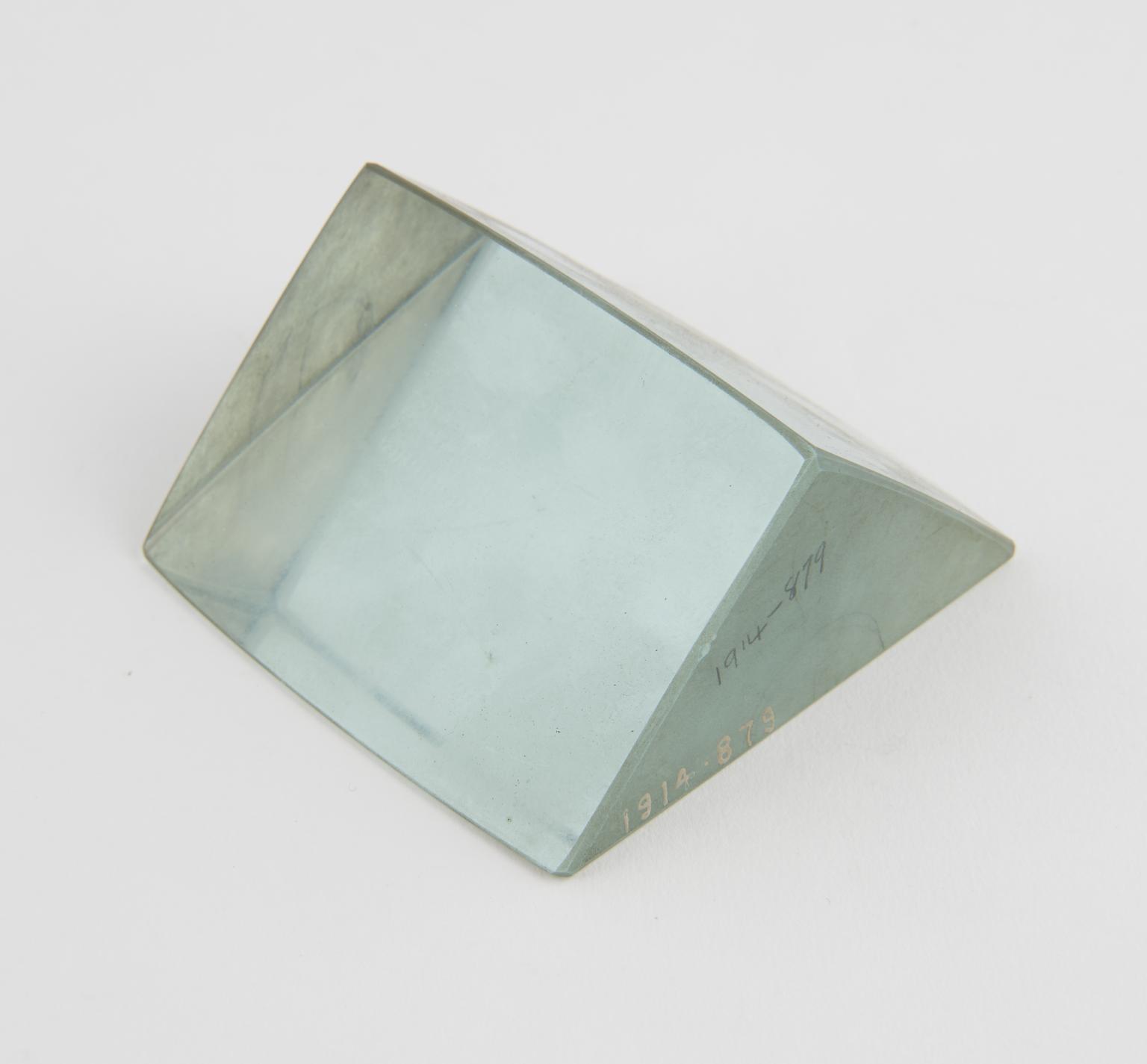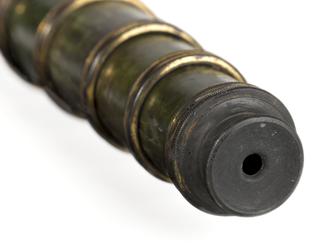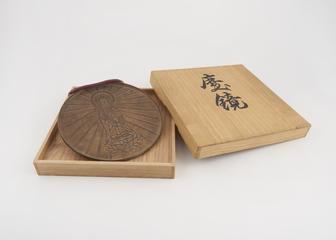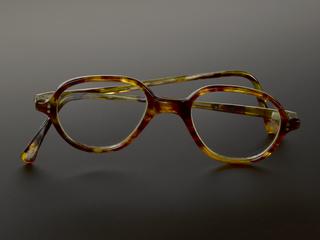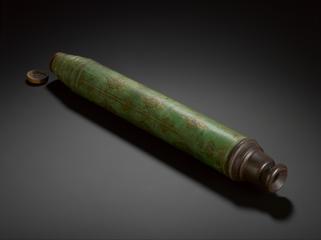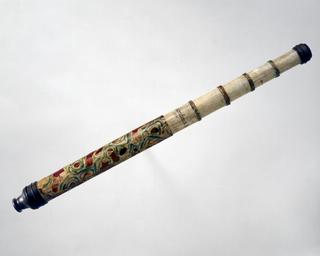Camera Obscura in Tripod Stand
Camera Obscura in tripod stand, made by Chevalier of Paris, one metal tube missing
More
This apparatus, which dates from the first half of the 19th century, is a modification of the ordinary form of mirror instrument. It was extensively used by artists in sketching from nature, before the introduction of photography.
The camera consists of a pyramidal box supported on a tripod which also carries an optical system for the production of the image.
A brass tube open on one side moves in another tune and contains a glass prism, one face of which (AC) is convex, and the other (CB) concave. Light entering the opening in the brass tube, falls on the convex surface, enters the prism, and being totally reflected at the plane face AB, passes into the box through the concave surface, and falls on a white surface at the base of the chamber.
The picture thus obtained is free from spherical aberration, a advantage not obtained with the mirror and convex lens of the ordinary instrument.
- Materials:
- wood (unidentified) , textile , metal (unknown) and glass
- Object Number:
- 1914-879 Pt1
